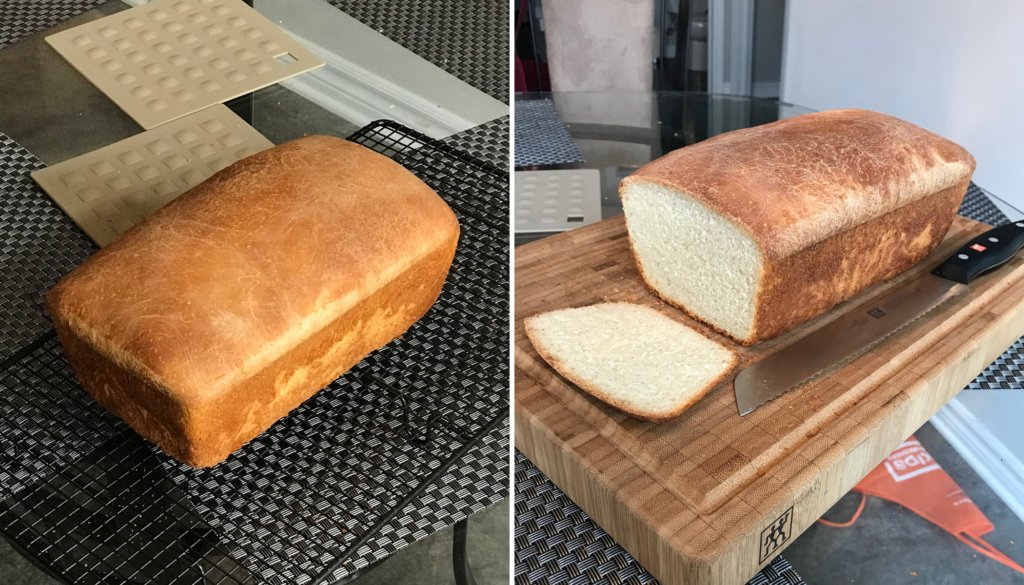
Chop & Brew fan Michael Lambe contacted us (from Ottawa, Canada) about a fun project he did recently where he was able to bake a loaf of bread using rehydrated dried kveik flakes instead of baker’s yeast. To set the scene, Michael tells us that in 2018 he brewed a Pilsner and used Voss Kveik to ferment it because he wanted to focus fermentation with a fairly neutral beer. It fermented in his garage at around 97F for 4-5 days, which produced a very clean beer with hints of citrus. After bottling, Michael spread the kveik yeast slurry over parchment paper on a cookie sheet and left it for a few days to dry out. Once completely dried he put the dried kveik flakes into a container and stored it in his freezer. Below are his notes and photos explaining the process of making the bread from rehydrated kveik. Thanks to Michael for sharing his experience!
Bread Process
I didn’t have any bread yeast and wanted to make bread. Plus, all the bread yeast was sold out near me. Then I remembered I had the Voss Kveik in the freezer and thought it would be fun to try. Mind you it sat in there for 1.5 years
I’ve never made bread before, so I don’t have any go-to recipes. I pretty much used the recipe on the flour bag but adjusted for one loaf.
I added a few tablespoons of granulated sugar to the warm water and added about one tablespoon of dried kveik. Took about an hour to dissolve and it didn’t look like it was activating but went with it anyway.

Made the dough and left it to rise for an hour. Not much happened so I warmed up the oven a little (likely 80-100F) and put it in there with a damp tea towel over it for about two hours. It rose by almost double. It was late so I put in the fridge overnight.

Next morning, kneaded the bread then put in the loaf pan. Left for an hour but it didn’t rise much, so warmed it in the oven gently again. Let it sit for about five hours (oven cooled down and I didn’t heat it back up again). Baked per instructions on the flour package
I’m guessing the slow rising was because the yeast was dormant/declining for so long in the freezer but not 100% sure.

Tasting Notes
It smelled amazing when cooked and is very delicious. I haven’t had homemade bread in a longtime so unfortunately I don’t have much to compare it against. The density is closer to rye bread than Wonder Bread, but not tough at all. Smells and tastes very “bready”. I don’t pick up any citrus smells or flavours and is a fairly clean bread.

It does have a great taste to it but would need to have a control batch to determine what character the yeast plays. Maybe when I can buy some bread yeast I’ll do a split batch. If I were to do it again, I would make a mini yeast starter (or try fresh yeast). I would probably add more yeast in as well since it was frozen for so long.
